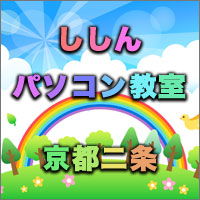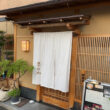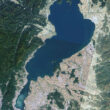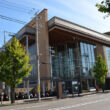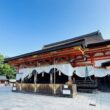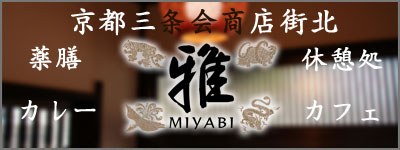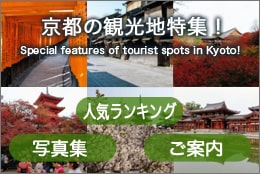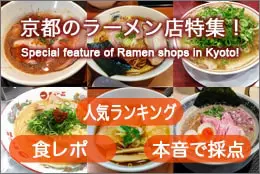Japan’s first Bangumi primary schools, fostered by the will and spirit of the Kyoto townspeople.
Posted date:2025-06-02Author:つばくろ(Tsubakuro) Transrator:ポンタ(Ponta)
Category:Talk about Kyoto
広告
adsense4
A book published several years ago titled “I hate Kyoto” by Dr. Shoichi Inoue, director of the Center for the Study of Japanese Culture, was a bestseller at that time.
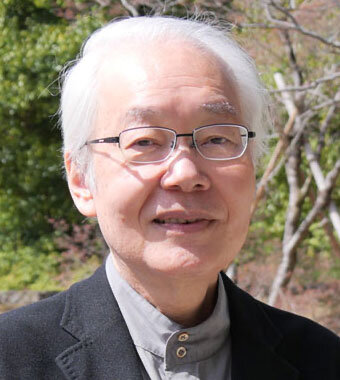
Dr. Shoichi Inoue
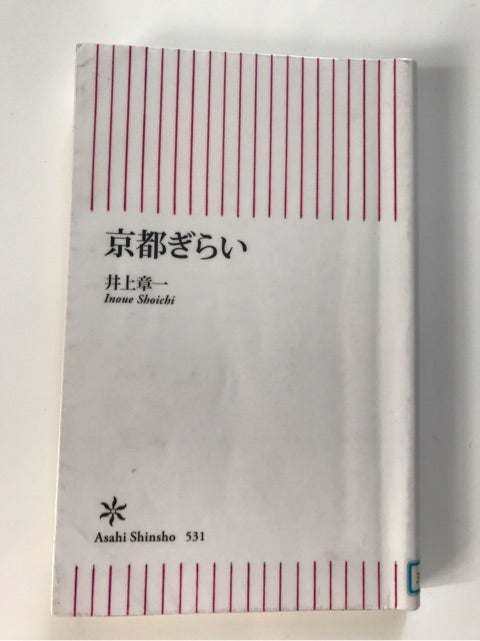
The front cover of the book “I hate Kyoto.”
What gathered people’s attention in this book was an episode at the start of the book.
To put it simply, when Dr. Inoue as a student was making a conversation with the owner of old house in Shimogyo Ward he was asked “Where are you from?” abruptly.
When Dr. Inoue from Saga answered “Yes, near Nison-in…” the owner said “it makes me feel nostalgy” and spoke.
“Not so long ago, people from that area used to come here to fetch manure.”
Dr. Inoue wrote that at the moment he heard this, he could not help but feel the essence of the Rakuchu people who obsess Rakuchu and Rakugai.
以来この記述を読んだ人々の間で、盛んに洛中と洛外について論争が交わされるようになったと聞きます。
洛中は洛外を馬鹿にしている、ところが洛外は洛外で亀岡を馬鹿にしている、亀岡は滋賀を馬鹿にしている…とどんどん話は広がっていくわけですが、行き着く先は東京なんてたかが100年ちょっとの都にすぎひん、京都は天子様を一時的に江戸へお貸ししているだけやとなって、京都独特の誇りの高さが揶揄されて話は終わります。
I hear since then among the people who read this description, there is a lot of debate about Rakuchu and Rakugai.
The story is expanding more and more, for example, Rakuchu is making fool of Rakugai, however, Rakugai, itself is making fool of Kameoka, and Kameoka is making fool of Shiga, but the story ends with the ridicule of Kyoto’s unique pride, saying that Tokyo is only a capital for a little over 100 years and that Kyoto is only temporarily lending the emperor to Edo. The story ends with the unique pride of the Kyoto people being ridiculed.
What I think to hear such discussions is that I, the columnist, as one of Rakuchu people, am tempted to argue those who say “Is they really only things to be dumbfounded?” because Rakugai people are making the story forward with the tone that all in all Rakuchu people is bothersome.
So, I would like to take this opportunity to introduce the spirit of the townspeople who helped to establish Japan’s first elementary school in the center of Rakuchu, an area known as Bangumi, and would like to make clear of the historical facts that the pride of today’s townspeople is high is not due to any unexplained reason.
About how the Bangumi elementary school originated
Many of you may have heard of Rakuchu and Rakugai, but the word “Bangumi” may be unfamiliar to you.
The origin of this word can be dated back to Muromachi period.
In the 15th century, after the Onin War, when the city of Kyoto was scorched to the ground, it was the townspeople, with their self-governing organization called “machigumi”, who were the driving force behind the restoration of the city and restart of the Gion Festival, which had ceased to be held.
Since that time, the townspeople who lived in the areas that are now Kamigyo, Nakagyo, Shimogyo were called “machigumi”, and they held an extremely strong spirit of autonomy.
Now, from the end of the Edo period to the beginning of the Meiji period, tremendously shocking events took place in the capital of Kyoto.
The population of Kyoto was reduced to one-third of what it had been before the war, commonly known as “dondon-yake”, when the Shinsengumi set fire to most of the city and the emperor moved to Tokyo and relocated the capital.
It was townspeople who belonged to the areas of “machigumi” that felt crisis.
The second year of Meiji, the government designated 27 “machigumi” as one “bangumi” and 33 bangumis were established in Kamigyo and 32 in Shimogyo.
The townspeople of these bangumis worked on implementation of ordinary education and establishment of the elementary schools, thinking that it was most important to fulfill the education, in other words, people development to reconstruct Kyoto.
The result of this was six months later of Meiji 2, Japan’s first elementary schools were created successively in each bangumi of the total of 64 bangumi in Kamigyo and Shimogyo by the hands of townspeople.
This was an event three years before Meiji 5 when Japanese government enacted the school systems in laws.
It was literally the birth of Japan’s first school-district-based elementary schools.
The created schools were named “Kamigyo no. X elementary school” or “Shimogyo no. X elementary school” according to the number of each bangumi.
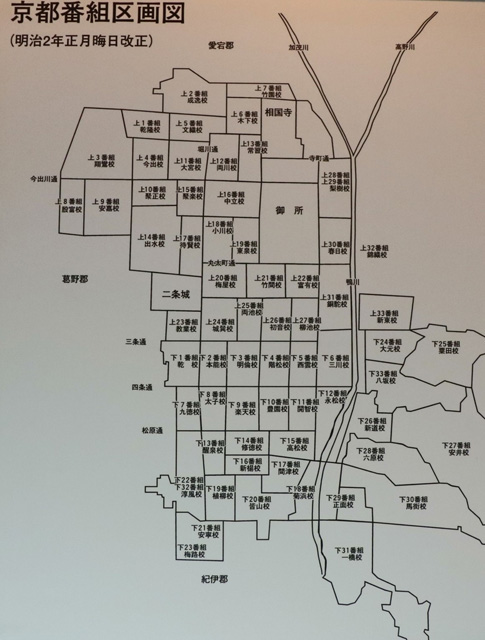
The map of 64 bangumi elementary schools
Most of the funding for thus created bangumi elementary schools and their operating costs were covered by donations from wealthy merchants.
When we hear the word town’s wealthy merchants the image is likely to be followed that they are in charge of Gion Festival at any rate, the spirits and passion of the townspeople in the early Meiji period that we, Kyoto people, who were deprived of political administration power by Tokyo must fuse our effort to education and that we must foster leading power for new Kyoto might possibly have been bigger than those they had against Gion Festival.
School operations by the regional hands, the system of Kamado-kin.
The bangumi elementary schools created one school in each Bangumi area were not supported only by donations of the wealthy merchants.
Once they opened, each person in every bangumi area was imposed the burden of school operating costs.
The money paid by all townspeople for one portion per year (today’s 2,500 yen) was called “kamado kin” (money in the kiln).
This suggest that the townspeople at that time were holding strong consciousness and awareness that we shall operate and propel the elementary schools by ourselves.
The content of lessons at Bangumi elementary schools
Well, the content of lessons at thus established elementary schools was at first similar to an extension of the terakoya of the Edo period, with “haiku-reading,” “recitation,” “calligraphy,” and “arithmetic.”
This is because in Kyoto, where there were many craftsmen and merchants, it was popular since the Edo period for the children of heirs to learn read, write, and do the abacus.
Gradually, however, among the townspeople involved in yuzen and pottery there was a growing desire for “Japanese painting” classes.
So, Japanese painting classes began to be introduced around Meiji 20, and teachers were local painters.
Prominent painters and ceramic artists who would go on to lead the Japanese art world in the modern era were successively produced.
Artists such as Shoen Uemura, Seiho Takeuchi, Rosanjin Kitaoji never forgot the memory of their alma mater and willingly donated their works to the schools even after their names became well known.
The number of works they donated to their alma mater amounted to over 2,500.
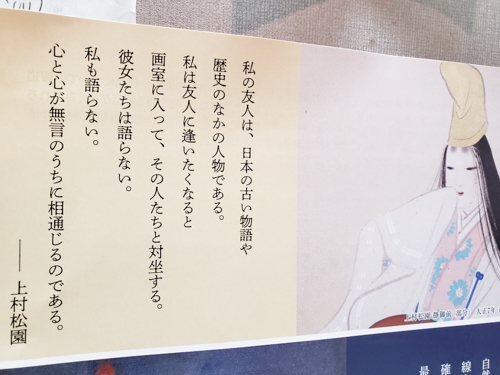
Photo of a page from a Japanese painting textbook by Shoen Uemura
The townspeople who produced these talents also took pride and pleasure in the fact that their graduates became famous painters and potters.
According to the records of Mituhiko Mori, the historian for arts, it is said that “Kyoto had a culture of decorating schools with art works, and hanging scrolls and Byeongpungs were placed in the classrooms. These were donated by townspeople, and painters living in Bangumi felt proud when asked for their donated works.
The role of Bangumi elementary schools in the regions.
Bangumi elementary schools served as not only education sites but also town council offices, family registry, tax payment, fire department, and police.
This was due to the fact that the schools were originated from the strong spirits of self-government of the townspeople.
The day after the Bangumi elementary schools opened, each Bangumi immediately submitted a written request to have a “fire watchtower” installed.
It reflected the earnest desire of the townspeople to prevent a repeat of the “dondon-yake” that had occurred only a few years earlier.
In addition, two years later, in October of Meiji 4, a time drum was installed next to the fire tower, and the elementary schools began to play a role of informing the entire Bangumi area of the time.
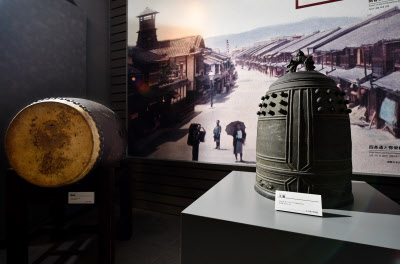
Drums and the half-bell of the fire watchtower used to announce the time at that time.
Kotaro Wasaki, an expert on the history of education in the Meiji era, wrote the following.
“Bangumi elementary schools became the tallest buildings in Bangumis, and in addition to being a community center, it became a symbol of the community.”
What became of Bangumi elementary schools?
At the time of opening, the 64 elementary schools that were called “Kamigyo no. X elementary school” or “Shimogyo no. X elementary school” eventually changed their names to those based on the regional history and the teachings of the Confucian.
For example, “Ryuchi”, “Juraku”, “Seishin”, etc.
As such, the 64 elementary schools that were familiar as the regional schools over a century spanning from early Meiji, Taisho, and Showa. However, at about the same time as the end of the Showa period, the declining birthrate and the urban doughnut trend became more pronounced, and the schools were forced to consolidate and close around the beginning of the Heisei period.
Today, only four elementary schools remain as they were when they were founded.
If several elementary schools have merged into one new school, the school has a new building and a new name.
Some of the closed schools are quaint old buildings that have been repurposed as public facilities, while others are being used as private hotels.
For example, the former Meilin elementary school is now the Kyoto Art Center. Also, the former Ryuchi elementary school has been reborn as the International Kyoto Manga Museum.
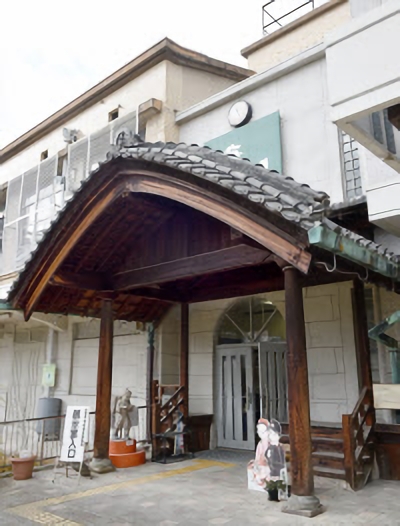
Photo of Meirin elementary school’s school building
However, it is clear that even though the original elementary school has disappeared, the people of the school district still retain the same send of community in the past.
Even though Nishijin elementary school is no longer there, the people who live there are still attached to it, saying, “We are from the Nishijin school district.”
This awareness of the school district is much much more robust, because it is not pointed at largely-divided, broader area of Rakuchu.
Now let me conclude by citing the case of the columnist’s alma mater, Churitu elementary school.
In case of Churitu elementary school that called its shining Churitu
Churitu elementary school, which was Columnist’s alma mater, was an elementary school adjacent to the Churitu Gate of Gosho.
When the school opened, its name was “Kamigyo no. 16 elementary school.”
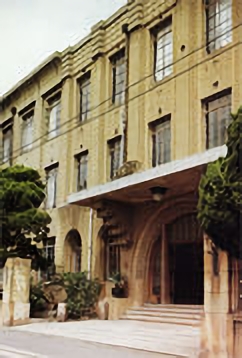
Photo of Churitu elementary school
Before the Meiji Restoration, the area was home to many court nobles who served the Imperial Court, but since the Meiji era, it has been home to many temples, schools, and public facilities such as the governor’s office and police headquarters.
Near the school, there was a large mansion surrounded by dense greenery which was a separate house of the Mitui industrial conglomerate.
People in the school district affectionally called it “Mitui-san’s forest.”
Both of the columnist’s parents and both of their parents graduated from Churitu elementary school, and I remember that many of my classmates at the time had similar family structures.
Now, let me give you some examples of what it was like when I attended Churitu elementary school.
1: The words frequently spoken at lessons
“Churitu is the elementary school like Tokyo University. It’s the most prestigious in Japan!”
I am sure that adults in the community put a kind of pressure on the teachers to say this.
2: The school building of Churitu elementary school was a stately modern Taisho era building.
I was told to no end that it was the first school building in Kyoto to be built of reinforced concrete.
The story I always heard at that time
“In the Muroto Typhoon Showa 9, the wooden Nishijin elementary school and many other schools were destroyed, and many children were killed under them. Churitu elementary school had been built of concrete since then. So, we had foresight.”
3: Every year on the anniversary of the founding of the school, not only current students but also old adults who have graduated from the school in the past are willing to attend the event.
Everyone was dressed as if they were going out for the day, and even an old man in haori hakama came to the ceremony.
As a child, the columnist had no idea why a grown people would venture out such a place.
4: The ward athletic meets held in the school district were ridiculously spectacular.
The school district is a place of rivalry among the towns that make up the school district, so each town had a strong bond.
5: Heisei 7, when Churitu elementary school was integrated, generations of graduates voluntarily planned and published a magazine called “School District Dayori”, which has continued to this day.
The contents of the periodicals sent to us regularly are the old-fashioned proud self-praise of Kyoto’s prestigious elementary school, the Tokyo University, “After all, it’s our Churitu elementary school! Such a thought is told passionately.
Churitu elementary school was merged with two adjacent elementary schools, “Ogawa” and “Shigeno” elementary schools, and renamed Shinmachi elementary school.
Finally, I would like to introduce you a recent episode related to Bangumi elementary schools that I came across.
Mr. K is a Kyotoite from an old family, and one time he and I were walking down Shinmachi Street from Shinmachi Imadegawa.
For me, everything I saw was nostalgic, so, just we were approaching the area where the former Churitu elementary school used to be, Mr. K asked me.
“Where did you go to elementary school?”
When I answered, “Churitu”, the way the person looked at me changed.
I guess it was the moment when he treated me like a proper Kyotoite.
When I asked Mr. K where he went to school, Mr. K said with a proud smile, “Me? I’m from Taiken.” And then he added.
“Just below Churitu. They’re both venerable schools.”
When I heard this, I thought to myself,” That’s a line that only a graduate of a Bangumi elementary school could say.”
The conclusion
Until now, I stated about the history surrounding the Bangumi elementary schools, their characteristics, and what they have become of, but what has remained unchanged in the people of the school district is the spirit of the townspeople and their strong self-governing spirit to protect their community by their own hands.
There is a certain arrogance in the fact that people who are not part of the Bangumi area are not people at all, but at the same time, I believe that the people of the town have the energy and foresight to take action and establish as many as 64 elementary schools in just six months, united by a sense of crisis.
Reference books
1:“I hate Kyoto” authored by Shoichi Inoue Asahi Shinsho.
2:Autonomy and Educational Participation of Townspeople as Seen in Kyoto’s Bangumi elementary school” Authored by Kotaro Wasaki
3:“Bangumi elementary school” The will and Spirit of the Kyoto Townspeople, Nihon Keizai Shinbun E-Book
4:“Shining Churitu” 120th Anniversary Publication
5:“Churitu School District Dayori, Heisei 23”
Author
つばくろ(Tsubakuro)
I was born and raised in Kyoto and am a native Kyotoite.
When I was young, I longed to visit Tokyo and Osaka, which are more bustling than Kyoto, but as I have gotten older, I have come to appreciate Kyoto a little more.
In this site, I will introduce you to some of the best places to explore Kyoto's food that you might otherwise miss at first glance.
